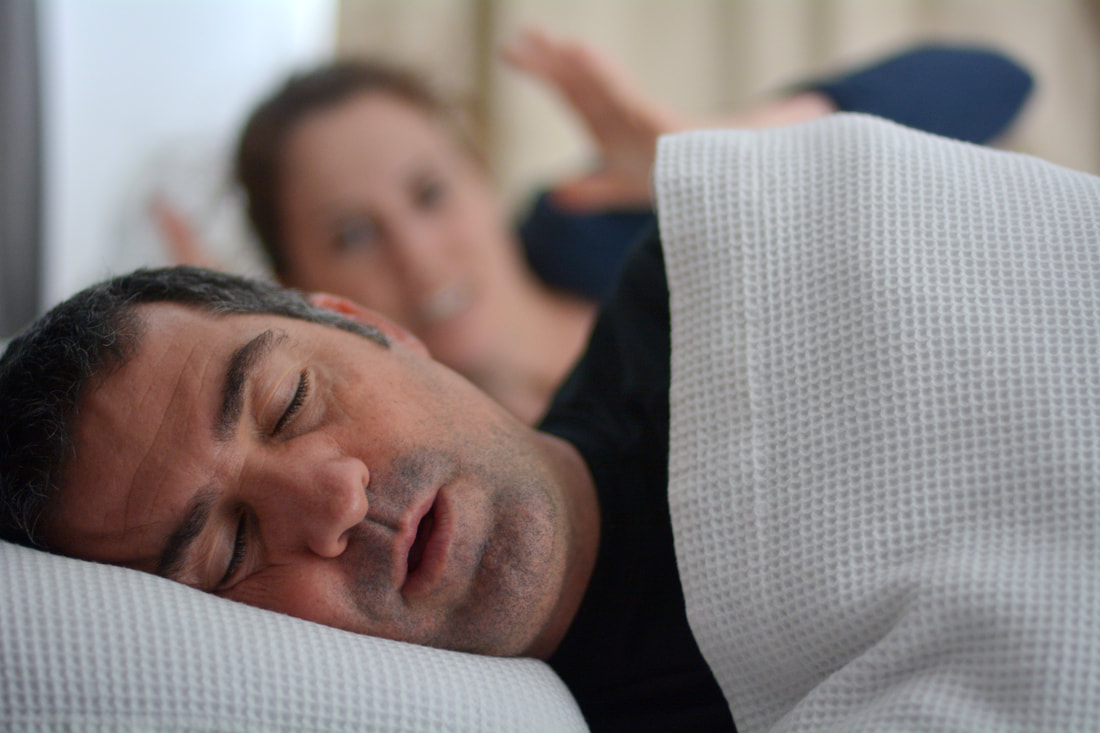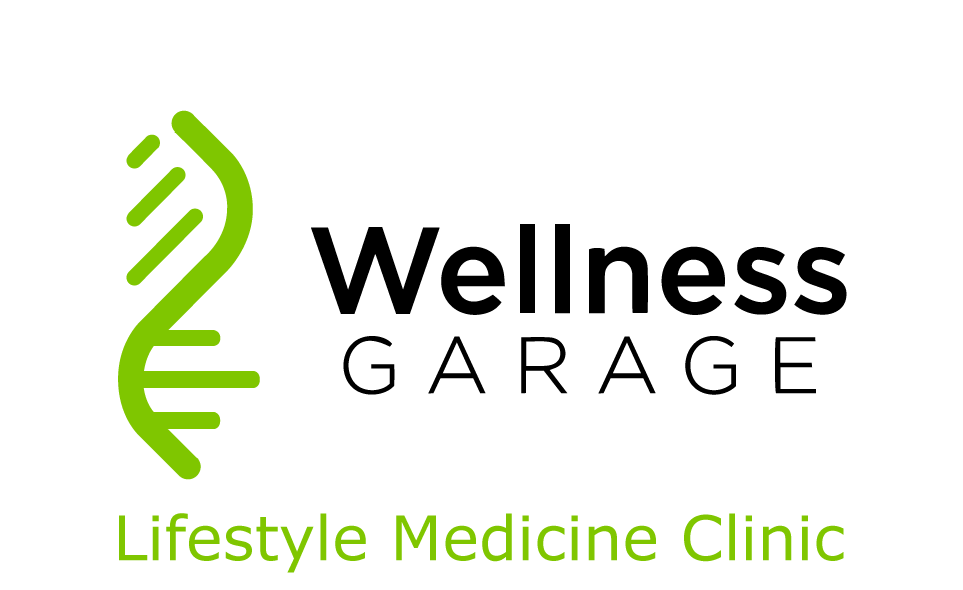|
Sleep apnea is one of the most serious medical conditions that often goes undiagnosed. It is estimated that up to 30% of Canadians suffer from it, yet only 6.4% have recognized the diagnosis. What is it? Sleep apnea is a serious condition in which a person’s breathing is repeatedly interrupted during the night. During normal sleep, air moves in an unobstructed, regular rhythm, through the upper airway, the throat and into and out of the lungs. With obstructive sleep apnea (OSA), airway blockages, usually from soft tissue collapse, prevent the normal regular breathing rhythm What are the symptoms?
The main symptoms of OSA are
However, some people have no symptoms or may not recognize that they have symptoms. Other symptoms may include one or more of the following:
Perhaps the best way to determine risk is the use of the STOP-BANG questionnaire which uses a series of questions and results of physical measurements to calculate the risk for sleep apnea in adults aged 18 and older. Snoring – Do you snore loudly (loud enough to be heard through closed doors)? Tired – Do you often feel tired, fatigued or sleepy during the daytime? Observed – Has anyone observed you stop breathing or choking/gasping during your sleep? Pressure – Do you have or are being treated for high blood pressure? Body mass index (BMI) – Body mass index more than 35kg/m2? Age – Age older than 50? Neck circumference – Neck size 17 inches or larger for males or 16 inches or larger for females? Gender – Male? Positive answers to the above questions are then used to determine risk: Low risk – Yes to 0 to 2 questions Intermediate risk – Yes to 3 to 4 questions High risk – Yes to 5 to 8 questions
How common is it? In 2017, 6.4% of Canadians self-reported a diagnosis of sleep apnea through the Canadian Health Measures Survey (CHMS) - this was more than double the rate reported in 2009. In the US, using the broadest criteria is estimated that 20-30% of men and 10-15% of women have sleep apnea. In all likelihood, sleep apnea is under-diagnosed - using the STOP-BANG risk tool, the CHMS found that nearly one-third (30%) of Canadian adults were considered to be at intermediate or high risk for sleep apnea - 15% were high risk and 15% were moderate risk. Rates are increasing along with the rates of obesity. What are the risk factors?
What happens if it is left untreated? The initial consequences of untreated sleep apnea are daytime sleepiness and difficulty concentrating results in increased errors and accidents. People with severe sleep apnea are two to three times more likely to have a motor vehicle accident - this represents an impact on morbidity and mortality that is similar to the cardiovascular sequelae of OSA. Over time untreated sleep apnea increase risk for cardiovascular disease, high blood pressure, abnormal heart rhythms, heart attack and stroke. People with OSA have higher rates Insulin resistance and Type II Diabetes. This association is partly manifested by the shared risk factor of obesity, but also appears to be independent. In one study, patients with severe OSA had a 30% higher risk of diabetes even after controlling for age, obesity, pre-existing cardiovascular disease. The physiological mechanisms underlying this risk are likely related to the increase in oxidative stress caused by lack of oxygen as well as activation of the sympathetic nervous system (with the insulin resistance effects of adrenaline and cortisol). For patients with existing metabolic syndrome - OSA is associated with poorer metabolic biomarkers: increased glucose, triglycerides, inflammatory markers, and overall increased cardiovascular risk. Nonalcoholic fatty liver disease (NAFLD) - given the increased risk of metabolic syndrome with OSA and the shared risk factors between NAFLD and metabolic dysfunction - OSA appears to contribute to the development and severity of nonalcoholic fatty liver disease (NAFLD), independent of shared risk factors such as obesity. Mortality - Severe OSA increases the risk of death by 2-3 time independent of other risk factors - interestingly an increased risk of mortality does not appear to be present for untreated mild OSA. What isn’t completely clear is how treatment of severe OSA affects the risk of mortality. Diagnosis: Once suspected due to witnessed apneic episodes, loud snoring, daytime sleepiness, resistant hypertension, or ineffective sleep - the next step is to get a sleep assessment. The gold standard is the polysomnogram - done overnight in a sleep lab (and requiring a referral from your physician), it measures breathing effort and airflow, blood oxygen level, heart rate and rhythm, duration of the various stages of sleep, body position, and movement of the arms/legs. A more accessible alternative not requiring physician referral is a Level III sleep study - using portable devices that can be used at home. Is it reversible? This depends primarily on the underlying cause of the sleep apnea - if the primary cause is obesity then weight loss can improve symptoms and lead to a cure. Brain damage caused by severe sleep apnea is reversible. A 2017 neuroimaging study is the first to show that white matter damage caused by severe obstructive sleep apnea can be reversed by continuous positive airway pressure therapy. There is high quality evidence that in most adults positive airway pressure therapy reduces the frequency of respiratory events during sleep, decreases daytime sleepiness, improves systemic blood pressure (BP), lowers the risk of crashes, improves erectile dysfunction, and improves quality of life across a range of disease severities. Unfortunately to date there have been no studies that have demonstrated that treatment improves mortality. What are the treatments?
References: https://www.uptodate.com/contents/sleep-apnea-in-adults-beyond-the-basics?search=sleep%20apnea&topicRef=7683&source=see_link https://open.alberta.ca/publications/level-i-and-level-iii-sleep-studies Canadian Thoracic Society Guidelines: https://www.ncbi.nlm.nih.gov/pmc/articles/PMC3070752/pdf/crj18025.pdf American Academy of Sleep Science: http://jcsm.aasm.org/ViewAbstract.aspx?pid=31513 https://www.health.harvard.edu/blog/weight-loss-breathing-devices-still-best-for-treating-obstructive-sleep-apnea-201310026713 https://aasm.org/brain-damage-caused-by-severe-sleep-apnea-is-reversible/ https://www.webmd.com/sleep-disorders/sleep-apnea/sleep-apnea STOP-Bang Questionnaire. Property of University Health Network, for further info: www.stopbang.ca modified from Chung F., et al. Anesthesiology. 2008. Vol. 108: 812-821; Chung F., et al. British Journal of Anaesthesia. 2012. Vol. 108:768-75; Chung F., et al. Obesity Surgery. 2013. Vol. 23: 2050-2057; Chung F., et al. Journal of Clinical Sleep Medicine. 2014. |
AuthorDr. Brendan Byrne Categories
All
|

 RSS Feed
RSS Feed
